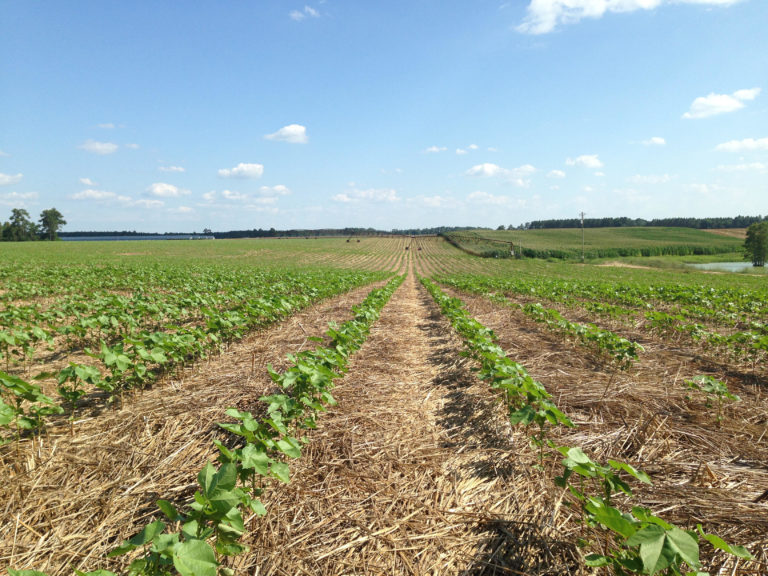Agricultural production systems based on no-till or reduced tillage, cover crops, and crop rotation increase organic matter in soils of the southeastern United States. These systems leave more organic matter in the soil than conventional systems where organic matter is lost through erosion and decomposition. Soil organic matter can be thought of as a savings account where money can be deposited, withdrawn or left in the bank. Deposits are made to the savings account in the form of roots, crop residues, compost and animal manures. Soil organic matter is withdrawn from the account through decomposition, erosion and sometimes leaching. Some organic matter stays in the savings account as it transforms into humus.
Soil organic-matter content is dependent on soil type, climate, and current and past crop and soil management. Soils in cool, wet climates such as the Midwest tend to have higher amounts of organic matter than soils in hot and wet climates like the Southeast. When organic-matter deposits are made to a degraded soil, soil organic matter accumulates rapidly [25, 29, 44]. At a certain organic-matter level determined by soil type and climate, the deposits and withdrawals of soil organic-matter levels are equal [27].
Agricultural management practices have a profound effect on soil organic matter. Cotton production with no-till and cover crops results in an increase in organic matter of about a quarter of a ton-per-acre per year compared to no-till alone [5]. In South Carolina, organic matter increased by 76 percent after 25 years of a reduced-tillage system with crop rotations including winter cover crops [3]. In southern Alabama, soil organic matter increased 38 percent in the top 2 inches of soil after three years of a cotton>winter cover crop>peanut>winter cover crop>cotton>winter cover crop rotation in which livestock grazed the winter cover crop [50].
Reduced tillage is an important first step to rebuild soil organic matter because it reduces the amount of soil organic matter lost to decomposition. However, if reduced tillage is used with winter fallow, where only winter weeds are present as a cover, soil organic matter may not change much because only a small amount of residue is being left in the system. Cover crops are a necessary second step to obtain the full benefit from a reduced-tillage system. On average, 430 pounds per acre per year of soil organic matter can be accumulated when conservation tillage is used [13], while 820 pounds per acre per year can be stored when conservation tillage is used with cover crops [5]. In the Southeast, cereal rye planted by November and grown to maturity can supply up to 10,000 pounds of dry-matter per acre in aboveground biomass, and the root system may provide nearly as much. The addition of this biomass boosts soil organic matter (Figure 3.9).
Crop rotations are also important to build and maintain soil organic matter. Greater amounts of soil organic matter are found in crop rotations with high-residue crops, such as corn and small grains, than in low-residue continuous cotton. A rotation can balance out differences in biomass inputs over a year. Some crops, such as corn, leave fairly heavy residues in the field. This helps compensate for the reduced biomass of a cover crop when it must be terminated early to allow for timely corn planting. In contrast, crops such as cotton leave little residue but can be planted into high-residue cover crops such as cereal rye. Crop rotation also helps break disease and pest cycles, and spreads risk to maximize profits over the rotation.

